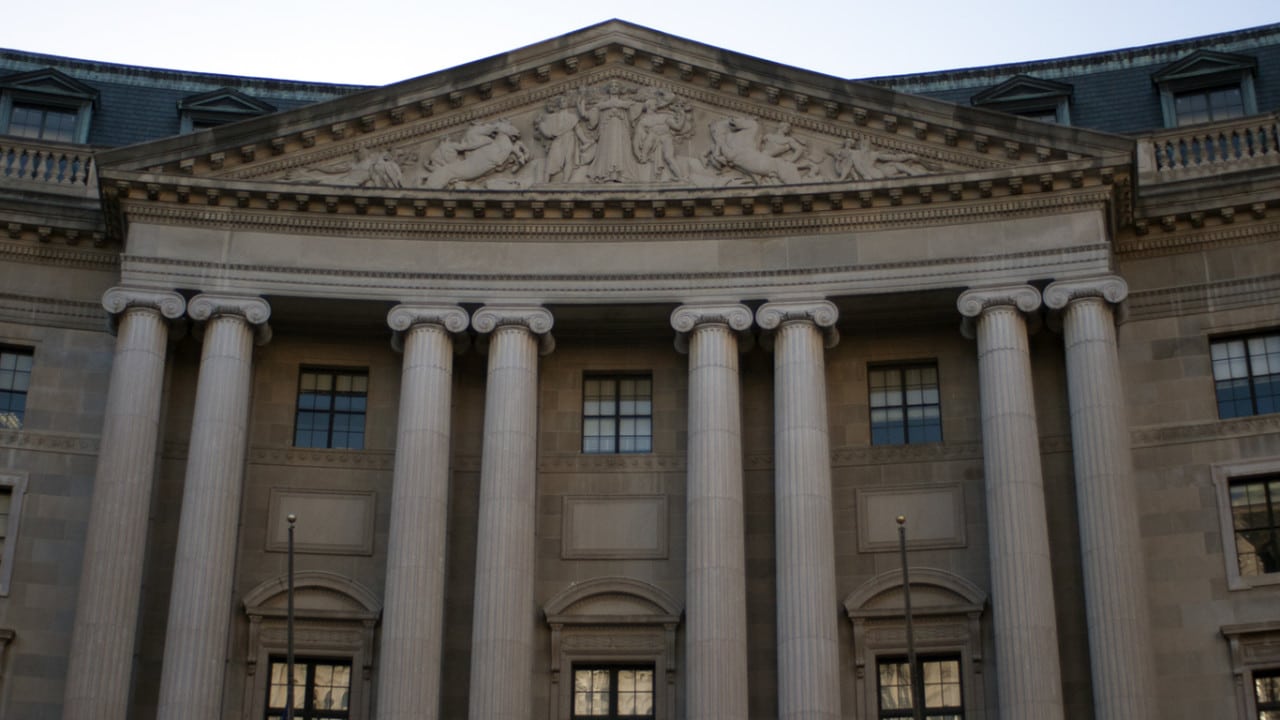
Dubbed the “hottest ticket in town” by the energy and environment community, oral arguments in the court case against the Environmental Protection Agency’s Clean Power Plan, carbon emissions standards for existing coal-fired power plants, kick off at 9:30 a.m. Tuesday at the U.S. Court of Appeals for the District of Columbia Circuit. The case pits a group of 27 states, along with numerous energy producers, utilities, and trade organizations, against the EPA.
Opponents of the rule, which requires states to develop action plans to meet federally set emissions reductions, argue the EPA has overstepped its statutory authority in the rule in several ways.
Under the rule, the EPA says states can meet their goal any way they see fit. However, in setting the goals, the agency included “outside the fence line” measures, such as generation shifting. According to the petitioners, this goes far beyond what is called for by the statute under which the rule was written, Section 111(d) of the Clean Air Act. The petitioners will argue that the “best system of emissions reduction” must be based on measures that can be taken at individual generating stations.
The EPA argues that the goals were set taking into account how they will be met in the real world. Generation shifting is likely to be part of how energy generators will lower their emissions. “EPA determined that the combination of using of smokestack controls and pollution credits from shifting generation among plants makes up a well-demonstrated system of emission reduction, one that is widely used by the power industry both to meet internal targets and prior federal and state regulations,” David Doniger, director of the Natural Resources Defense Council’s climate and clean air program, explained in a blog post Friday.
The petitioners will also argue that the rule shouldn’t have been penned at all, as the Clean Air Act states that a source regulated under Section 112 – as coal-fired power plants are – cannot be regulated under Section 111(d), the section under which the Clean Power Plan was drafted.
The EPA argues, however, that that portion of the Clean Air Act is ambiguous due to a clerical error. “Petitioners’ argument that the text of Section 111(d) bars EPA from regulating power plants’ CO2 emissions because power plants’ emissions of other pollutants are regulated under Section 112 also fails. Section 111(d) is ambiguous, and EPA reasonably resolved those ambiguities—and avoided creating an unnecessary conflict in enacted statutory text—by concluding that Congress did not intend to bar regulation of different pollutants under different programs,” according to a brief EPA filed in late March.
The parties will have just over three-and-a-half hours in front of a 10-judge panel to plead their cases. Oral arguments had been scheduled for early June before a three-judge panel. In mid-May, the court announced that the arguments would be pushed back and would be heard “en banc,” by nearly full panel of the court’s judges. At the time, two judges choose not to participate: Chief Judge Merrick Garland and Judge Nina Pillard. The court announced on Sept. 22 that Pillard would sit on the panel after all. Garland, however, will still sit this one out, likely due to his nomination to the Supreme Court.
The 10-judge panel that will hear oral arguments in the case consists of six judges appointed by Democratic presidents and four appointed by Republican presidents.
Implementation of the Clean Power Plan is currently on hold, following a Supreme Court stay in February, pending the results of the judicial review. While the EPA and supporters of the rule were quick to note that the high court’s ruling was not based on the merits of the case, opponents have pointed to the stay as a signal that the courts will decide in favor of their arguments.
“When we asked the Supreme Court to stay the Clean Power Plan, the court took the extraordinary step of halting the rule in its tracks until the litigation played out. The justices’ decision was every bit as unprecedented as the Clean Power Plan itself and an indication of serious flaws in the rule. We’re confident we will prevail on the merits as well,” National Rural Electric Cooperative Association CEO Jim Matheson said Monday in a written statement.
Just days later after the Supreme Court issued the stay, Justice Antonin Scalia unexpectedly died. A large group of Republicans in Congress, unwilling to allow President Barack Obama to put another justice on the court so late in his term, insisted the nomination should be left to his successor. This move could leave the seat open until after the next administration takes office in January 2017.
With eight justices on the Supreme Court, there is the potential for tie rulings, as has been the case in a couple opinions since Scalia’s death. In the case of a tie, the case would revert to the decision of the lower court, adding even greater importance to the Court of Appeals decision.